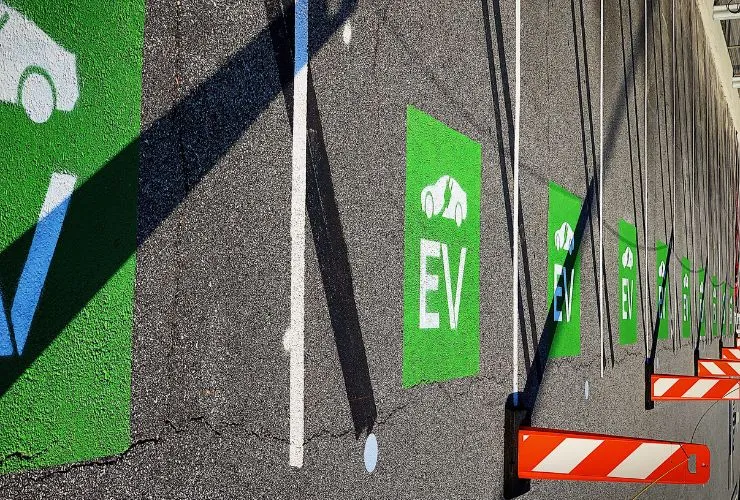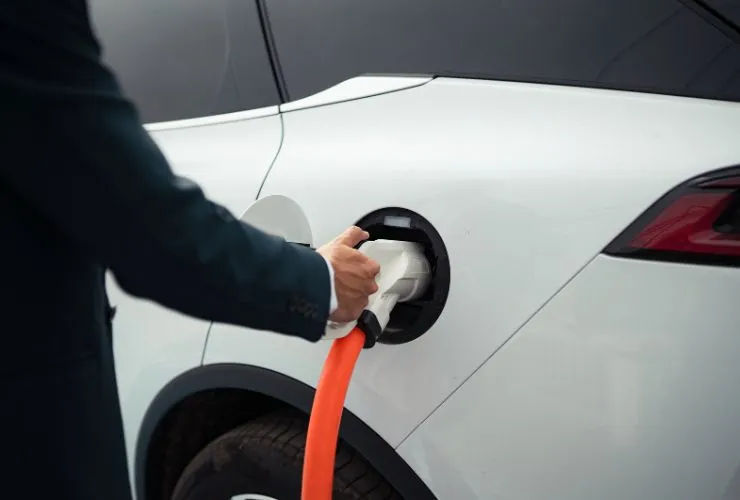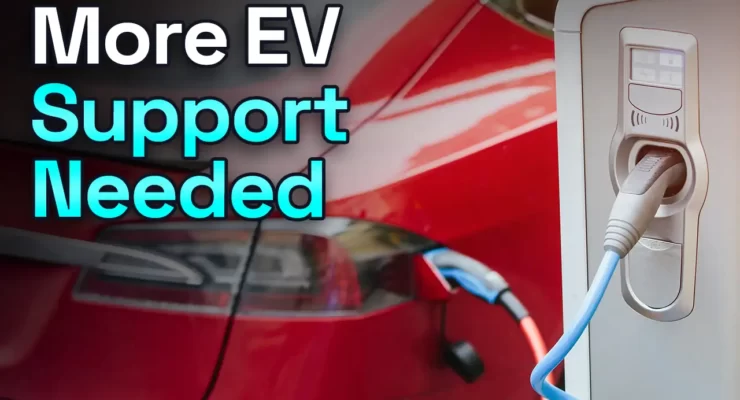Fast read
The federal government can play a crucial role in promoting electric vehicle (EV) usage in Australia through various measures. Financial incentives, such as grants, tax breaks, and refunds for EV purchases, can make EVs more affordable for individuals and companies. Education about the benefits of EV ownership, such as lower running and servicing costs, can address consumer concerns.
Infrastructure improvements, including support for increased charging infrastructure and installations along key travel routes, can enhance the convenience of EV usage. Encouraging the adoption of vehicle-to-home charging systems, where EVs can supply power to homes during peak periods, strengthens the grid and reduces electricity costs.
Implementing taxes or tariffs on internal combustion engine vehicles can also encourage EV adoption by recognizing the environmental cost of ICE vehicles. Overall, the government's active involvement and support can help lower greenhouse gas emissions, improve air quality, and foster a more
Implementing taxes or tariffs on internal combustion engine vehicles can also encourage EV adoption by recognizing the environmental cost of ICE vehicles. Overall, the government's active involvement and support can help lower greenhouse gas emissions, improve air quality, and foster a more sustainable transportation system in the future.
How the government can increase EV usage
The federal government can do a lot to increase the number of people to use electric vehicles (EVs) on Australia’s roads. Right now, Australia is falling behind other OECD countries when it comes to supporting EVs and setting cleaner standards for regular cars.
To help boost the adoption of electric vehicles, the government could offer financial incentives, like discounts or tax breaks, to people buying EVs. This would make EVs cheaper for buyers.
Building more charging stations across the country is also important. More fast charging stations, especially along highways and in rural areas, would help people feel more confident about driving longer distances in their EVs without worrying about running out of power.
The government could also set goals for how many electric vehicles should be on the road by a certain year. Making rules stricter for polluting cars could also encourage people to switch to cleaner EVs. Plus, running campaigns to tell people about the benefits of EVs would help too.
The government could lead by example by using more electric vehicles in its own fleets of vehicles. This would show everyone that EVs are a good choice.
Working together with state and local governments, as well as businesses, will help make all these plans work better. Everyone needs to chip in to make Australia catch up with other countries in using EVs and reducing pollution.
Financial Incentives
The government can provide financial incentives to individuals and companies to make EV purchases more affordable. This may include grants, tax breaks, refunds for EV purchases, and financial assistance for the construction of charging infrastructure. The government can increase the accessibility of electric vehicles to a broader spectrum of consumers by lowering their initial purchase prices.
Other incentives and benefits may be more state-based such as free parking for EVs, use of T2 or T3 lanes for single-person drives etc.

Education
Owning an Electric Vehicle (EV) presents a range of benefits that make it increasingly appealing to potential EV drivers. One of the most notable advantages is the lower running costs. Charging an EV with electricity is significantly cheaper than fueling a traditional Internal Combustion Engine (ICE) vehicle. In many areas, the cost per mile or kilometre for electricity can be half or even less than that of gasoline or diesel, leading to substantial savings over time.
Additionally, EVs tend to have lower servicing costs because of their simpler design. With fewer moving parts compared to ICE vehicles, there’s less maintenance required, reducing the overall servicing expenses. The absence of components like oil filters, spark plugs, and complex transmission systems further minimises the need for regular maintenance. Moreover, the reliability and durability of EV motors mean fewer mechanical issues and longer-lasting performance.
Range anxiety, often a concern for potential EV owners, is becoming less of an issue with advancements in battery technology. Many modern EVs offer a range of 400km or more on a single charge, suitable for most daily commutes and longer trips. As battery technology continues to evolve, we can expect even greater ranges, alleviating concerns about running out of power.
Infrastructure Improvements
Support increased charging infrastructure across the country, particularly key travel routes. The government could provide incentives and programs to support the installation of electric car charging along travel routes similar to the way petrol stations are now and increase the convenience of travelling and charging cars on longer trips. Encourage the installation of chargers at businesses, and shopping centres, to enable employees and customers to charge cars while parked during the day.
Electric vehicle charging during the day will strengthen the grid and enable excess solar energy to be stored in cars for both driving and vehicle-to-home use.
Home Electrification
The government could encourage the adoption of a vehicle-to-home system, where you can charge an electric car at home, utilising the power stored in the battery to supply the house during peak periods. This increases the value of an electric vehicle to save electricity costs in the home, reducing the purchase of electricity during evening peaks.
This could be extended to Vehicle to Grid, where cars can contribute to supplying power back to the grid during peak demand periods and being paid as an extension to a VPP scheme. Further supporting the ability of the grid to reduce fossil fuel use

Taxes
The environmental cost of ICE vehicles should be recognised with a tax on the emissions that the ICE vehicles create. This sends signals regarding the relative price of EVs vs ICE vehicles to increase electric vehicle adoption.
In summary, the Federal Government must play a key role in encouraging the use of electric vehicles. The government can foster an environment that encourages more people to adopt electric mobility through financial incentives, infrastructure development, support for research and development, fleet electrification, regulatory measures, education and awareness campaigns, collaboration with the private sector, and international cooperation. By doing this, the government may aid in lowering glasshouse gas emissions, enhancing air quality, and developing a future transportation system that is more sustainable.


